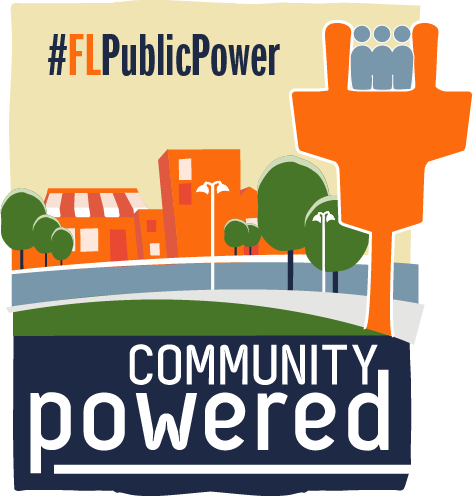High-Stakes FPL Rate Hearing Starts
 Article reposted with permission from The News Service of Florida.
Article reposted with permission from The News Service of Florida.
After jettisoning a “counter proposal,” state regulators Monday waded into a rate case that could lead to Florida Power & Light customers paying billions of additional dollars in the coming years.
The Florida Public Service Commission began what could be a two-week hearing that includes voluminous technical and financial information as FPL seeks increases in base electric rates.
“This is a large case. It is complex. It is obviously controversial,” said James Brew, an attorney for the Florida Retail Federation, one of a wide range of groups and businesses that have intervened in the case.
FPL President and CEO Armando Pimentel, the opening witness, said the utility has provided reliable electricity amid rapid growth. FPL has been operating under a rate settlement approved in 2021 and is seeking approval of a plan that would last from 2026 through 2029.
“Since 2021, we have added 275,000 new customers to our service area, and we have continued to make prudent investments for their benefit,” he said. “We believe each one of our new customers deserves the same outstanding reliability and low costs that our existing customers have long experienced.”
But Ali Wessling, an attorney with the state Office of Public Counsel, which is designated by law to represent consumers, told commissioners that FPL “would have you believe it is their welfare that you are here to protect.”
“Many of FPL’s requests would, in fact, cause harm to the welfare of FPL’s customers and result in unfair, unjust, unreasonable and thus unaffordable rates," Wessling said.
FPL filed an initial rate proposal in February but scaled it back in a proposed settlement filed Aug. 20. The Office of Public Counsel and allied consumer groups on Aug. 26 filed a competing settlement plan — described as a counter proposal — that would have led to smaller increases.
But Public Service Commission Chairman Mike La Rosa, who acted as a prehearing officer in the case, rejected the counter proposal, ruling that FPL is an “indispensable party to any settlement.” The Office of Public Counsel and its allies sought reconsideration of that decision, but the commission on Monday backed La Rosa’s decision to reject the counter proposal.
Adding to the complexity of the hearing, the commission is first considering issues related to the proposal that FPL filed in February. After that is finished, it will consider the proposed settlement that FPL reached last month with numerous businesses and groups.
FPL’s February proposal sought increases of $1.545 billion in 2026 and $927 million in 2027, along with passing along costs in 2028 and 2029 for solar and battery projects. The Office of Public Counsel has said that plan would cumulatively lead to customers paying an additional $9.8 billion over the next four years.
The proposed FPL settlement would lead to base-rate increases of $945 million in 2026 and $766 million in 2027, according to the utility. FPL also would collect additional amounts in 2028 and 2029 for solar-energy and battery-storage projects.
As a benchmark, utilities cite bills for residential customers who use 1,000 kilowatt hours of electricity a month. FPL in recent years also has had different bill amounts for customers in its traditional service area and Northwest Florida customers who were previously served by Gulf Power Co.
If the proposed settlement is approved, FPL said last month that residential customers who use 1,000 kilowatt hours a month in the traditional territory would see their bills go from the current $134.14 to $137.93 in January 2026; $143.05 in January 2027; $146.24 in January 2028; and $148.15 in December 2029.
Such customers in Northwest Florida would see their bills go from the current $143.60 to $142.66 in January 2026; $143.05 in January 2027; $146.24 in January 2028; and $148.15 in December 2029.
The Office of Public Counsel and its allies have said the proposed FPL settlement could lead to cumulative increases over four years of $6.903 billion. FPL reached its proposed settlement with the Florida Industrial Power Users Group; the Florida Retail Federation; the Florida Energy for Innovation Association; Americans for Affordable Clean Energy; the Southern Alliance for Clean Energy; Walmart Inc.; EVgo Services, LLC; Circle K Stores, Inc.; RaceTrac Inc.; Wawa, Inc.; Electrify America, LLC; Armstrong World Industries, Inc.; and federal government agencies.
The counter proposal, which was filed Aug. 26, would have resulted in increases of $867 million in 2026 and $403 million in 2027. It also would have left open the possibility of FPL seeking increases of an estimated $195 million in 2028 and $174 million in 2029 for generation-related projects that could include solar and battery projects.
The counter proposal could have led to a cumulative increase of $5.241 billion. Along with the Office of Public Counsel, the counter proposal was filed by the groups Florida Rising, the League of United Latin American Citizens of Florida, Environmental Confederation of Southwest Florida and Floridians Against Increased Rates.
The rate case includes myriad issues that go into the overall numbers.
As an example, a closely watched issue in base-rate cases is utilities’ allowed “return on equity,” a measure of profitability. The proposed FPL settlement includes a 10.95 percent target for return on equity. The opponents’ now-scuttled proposal included a 10.6 percent target.
 Enter your email address in the
Enter your email address in the 